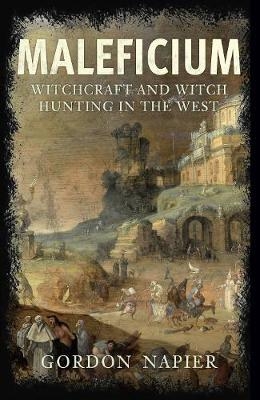
Maleficium
Witchcraft and Witch Hunting in the West
Seiten
2017
Amberley Publishing (Verlag)
978-1-4456-6510-8 (ISBN)
Amberley Publishing (Verlag)
978-1-4456-6510-8 (ISBN)
- Titel z.Zt. nicht lieferbar
- Portofrei ab CHF 40
- Auch auf Rechnung
- Artikel merken
An examination of the origins of belief in witchcraft and the extraordinary witch-hunts in Western Europe during the early modern period
Europe in the 1500s and 1600s was an ascending, expanding civilisation, poised to become globally dominant, and destined to produce the Enlightenment and the Scientific Revolution. Confident mercantile republics and opulent monarchies alike seemed to be flourishing. But it was also a Devil-haunted society. Witches and imps were not merely the stuff of stories, used by mothers to frighten their children into obedience. Many people believed in a real conspiracy of witches, in league with the cloven-hoofed Devil, flying on broomsticks, having familiar spirits and casting harmful spells. People from all classes, from peasants to kings, attributed calamities to malevolent witchcraft, and anyone (though it was of course mostly women) could be suspected of being a witch. Witch hunts flared up, particularly in German lands. Mass persecutions culminating in burnings – seemingly insane and monstrous acts of societal self-mutilation on a grand scale – were accepted as acts of faith, justice and collective self-defence.
Who were the witch hunters? Where did they get their ideas? Did witch hunts mask politically motivated persecutions? Were there witches? Were witches a secret society, or a surviving shamanic religion? Did initiates induce hallucinations of night-flights and contact with supernatural beings? Or does torture and the preconceived notions of the witch hunters account for the consistent confessions secured from suspected witches?
Europe in the 1500s and 1600s was an ascending, expanding civilisation, poised to become globally dominant, and destined to produce the Enlightenment and the Scientific Revolution. Confident mercantile republics and opulent monarchies alike seemed to be flourishing. But it was also a Devil-haunted society. Witches and imps were not merely the stuff of stories, used by mothers to frighten their children into obedience. Many people believed in a real conspiracy of witches, in league with the cloven-hoofed Devil, flying on broomsticks, having familiar spirits and casting harmful spells. People from all classes, from peasants to kings, attributed calamities to malevolent witchcraft, and anyone (though it was of course mostly women) could be suspected of being a witch. Witch hunts flared up, particularly in German lands. Mass persecutions culminating in burnings – seemingly insane and monstrous acts of societal self-mutilation on a grand scale – were accepted as acts of faith, justice and collective self-defence.
Who were the witch hunters? Where did they get their ideas? Did witch hunts mask politically motivated persecutions? Were there witches? Were witches a secret society, or a surviving shamanic religion? Did initiates induce hallucinations of night-flights and contact with supernatural beings? Or does torture and the preconceived notions of the witch hunters account for the consistent confessions secured from suspected witches?
Gordon Napier is the author of the best-selling 'The Rise and Fall of the Knights Templar', 'A to Z of the Knights Templar' and 'Mary Magdalene: Biography of a Legend'. His interest in the history of witchcraft and witch-hunts began while he was studying Medieval and early modern history at the University of Worcester. Later, Crusader studies at the University of London led him to his first books – witchcraft and demonic possession are key topics both in the destruction of the Templars and the cult of Mary Magdalene.
| Erscheinungsdatum | 22.07.2017 |
|---|---|
| Zusatzinfo | 20 Illustrations |
| Verlagsort | Chalford |
| Sprache | englisch |
| Maße | 156 x 234 mm |
| Gewicht | 539 g |
| Themenwelt | Sachbuch/Ratgeber ► Gesundheit / Leben / Psychologie ► Esoterik / Spiritualität |
| Geschichte ► Allgemeine Geschichte ► Neuzeit (bis 1918) | |
| Geisteswissenschaften ► Geschichte ► Regional- / Ländergeschichte | |
| Geschichte ► Teilgebiete der Geschichte ► Kulturgeschichte | |
| ISBN-10 | 1-4456-6510-7 / 1445665107 |
| ISBN-13 | 978-1-4456-6510-8 / 9781445665108 |
| Zustand | Neuware |
| Haben Sie eine Frage zum Produkt? |
Mehr entdecken
aus dem Bereich
aus dem Bereich
Europa 1848/49 und der Kampf für eine neue Welt
Buch | Hardcover (2023)
DVA (Verlag)
CHF 67,20
Giordano Bruno - ein ketzerisches Leben
Buch | Hardcover (2024)
C.H.Beck (Verlag)
CHF 41,85


